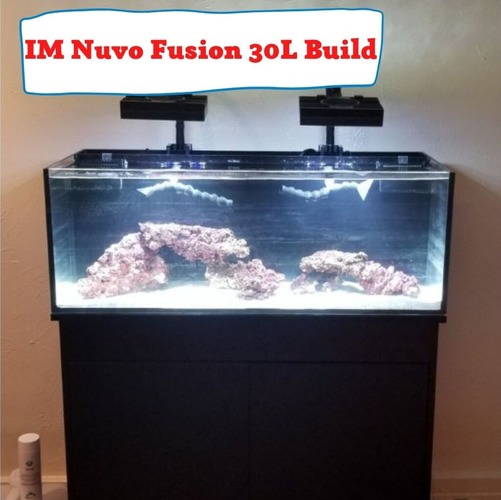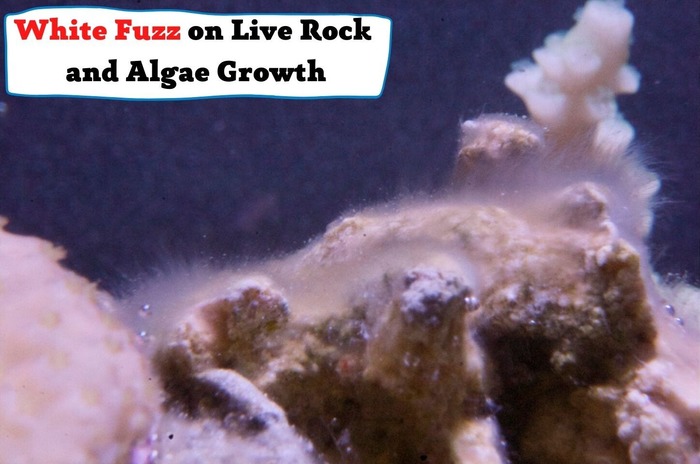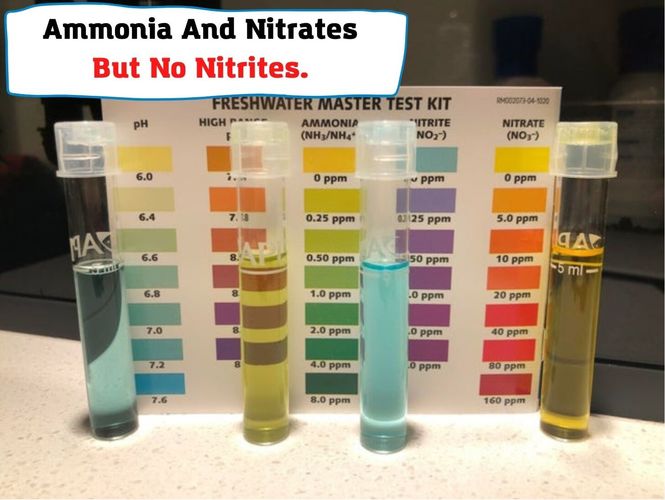
A healthy aquarium requires effective biological filtration and vigorous plant growth. Filtration in aquariums may be mechanical, chemical, or biological (to break down fish waste). The “nitrogen cycle” in a fish tank must function efficiently to convert and eliminate ammonia, nitrite, and nitrate, the principal biological poisons in an aquarium. A fresh aquarium’s wastes normally take three months to convert to nitrate ultimately.
Before answering the question mentioned above, it is essential to understand the “nitrogen cycle” and the role of nitrites in it. Here’s what we’ll cover in this article:
- Nitrogen cycle
- What are nitrites?
- Reasons for nitrite build-up
- Nitrites harm the fish
- Perfect level of nitrites in a fish tank
- Safe nitrite concentration in a fish tank
- Fish tank with ammonia but no nitrites
Nitrogen cycle
The nitrogen cycle is a chemical process with a series of chemical conversions. Ammonia is created by rotting food and fish waste. Ammonia is a poisonous compound that may kill fish in an aquarium. However, ammonia is “food” for nitrifying bacteria found in water.
This bacterium “eats” the poisonous nitrite, generating the less harmful nitrate. They consume the ammonia and transform it into nitrite. The biological food chain balances the detrimental effects of ammonia and nitrite by removing nitrate from the food chain. To maintain nitrate levels safe for your fish, filter and replace your aquarium water periodically. The nitrogen cycle is a continuous procedure necessary to maintain the chemical equilibrium of water for plants and fish. Regularly test your aquarium’s water and add or replace activated carbon, ammonia neutralizers, or water conditioners as needed.
‘’Nitrogen Cycle’’ has three main steps:
- FORMATION OF AMMONIA: Fish excrement produces ammonia, which is toxic to most fish. Ammonia levels often rise three days after fish are introduced to a new aquarium.
- THE NITRITE STAGE: Nitrosomonas convert ammonia to nitrite, rising as ammonia levels. Nitrite levels typically rise within a week of introducing fish.
- NITRATE FORMATION: Nitrobacters produce less nitrite and more nitrate.
The biological filter works appropriately when there are no nitrates and ammonia or nitrite levels (2-6 weeks). Nitrates are safe for fish to eat in small amounts due to their low toxicity.
What are nitrites?
Nitrite (NO2) is a hazardous contaminant created by bacteria during the nitrification of fish waste and other organic materials. It’s critical to test your water for ammonia, nitrite, and nitrate.
- Nitrosomonas bacteria convert lethal ammonia (NH4) from decaying matter and fish waste to nitrite, which is less hazardous to fish.
- Nitrospira and Nitrobacter convert the nitrite to nitrate (NO3), which is less harmful.
Reasons for nitrite build-up
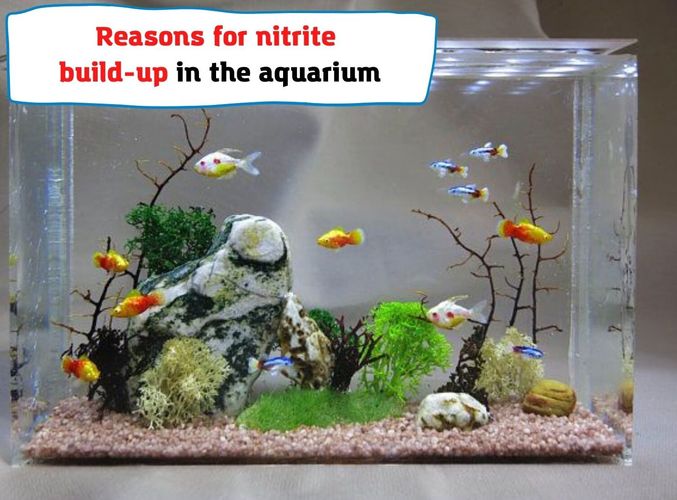
Water contaminated with ammonia and nitrites causes stress to the fish. High nitrite levels result from too much pollution for the good bacteria to handle. When enough bacteria and garbage are added daily, the ammonia and nitrite levels should be zero.
Filter bacteria develop in response to the quantity of pollution entering the tank and require large enough to grow to manage the fish’s pollution. Following are the causes of high nitrite concentration in your fish tank:
- Overfeeding and overstocking contribute to excessive nitrite levels
- Improper filter maintenance and new tank sickness
- New filters contain few germs and remove tiny pollutants to increase nitrite levels. Depending on the temperature and chemical components of the water, it takes 4-6 weeks for the bacteria to develop.
- Don’t overstock it with fish or food if you have a new tank or filter. The more pollution in the tank, the higher the nitrite level will be and the riskier it is for the fish.
Nitrites harm the fish!
Nitrite enters the fish’s bloodstream via the gills and causes several problems. It oxidizes the iron in their hemoglobin to become methemoglobin, which, unlike hemoglobin, cannot transfer oxygen across the body. This is called Nitrite intoxication that causes liver, gill, and blood cell destruction. This condition (methemoglobinemia) causes severe breathing difficulties and possibly suffocation.
Affected fish typically gasp or linger near the surface where the oxygen level of the water is highest. They’ll have faster gill movements and keep their fins close to their bodies. Although fish may display indicators of nitrite poisoning, only testing the water can reveal the exact amount. Long-term nitrite exposure weakens the immune system, causing illnesses like white spots and bacterial infections like fin rot or ulcers, assuming the fish haven’t perished from nitrite poisoning.
Fish tolerance to nitrite varies across species and even within species. Some species may slow the pace of blood entry via the gills, and water chemistry affects toxicity. So, not all fish in the tank or pond will become sick or die due to high nitrite levels.
Perfect level of nitrites in fish tank/aquarium
Nitrogen levels should be as low as possible at all times. Some fish may handle high concentrations, but the general rule is that anything over 0.1 mg/l should be considered inappropriate and potentially stressful for fish. Even nitrite concentrations as low as 0.25 mg/l might impair sensitive species in some circumstances.
It is advised to test regularly and change water to lower levels. In any case, if you detect nitrites in your aquarium, attempt to determine what caused it and prevent it from happening again. Regular partial water changes of around 10% can help keep nitrate levels safe.
Keep a watch on the fish for illness. To reduce losses, adding an airstone or using a venturi to increase dissolved oxygen levels is the best action you can take. Aquarium salt (sodium chloride) has long been used to reduce nitrite toxicity by preventing methemoglobinemia under specific situations. Using it properly never harms fish, even salt-intolerant species.
Most freshwater species respond well to a 10:1 dosage (10mg/l salt to 1mg/l nitrite). Higher dosages of salt are required to manage illness or osmoregulatory issues!
Safe nitrite concentration in a fish tank
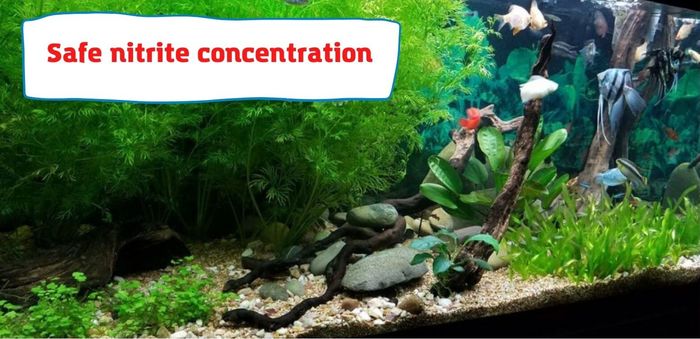
Most aquarium owners always remain concerned about the nitrite level in their fish tanks and always ask what nitrite concentrations are considered safe?
In ideal conditions, the nitrite level in a fish tank/aquarium should be zero (but that isn’t possible).
You know well that nitrites are toxic and should be avoided at all costs. Nitrites should be quickly broken down in a well-established tank, resulting in zero readings when examined. As a result, a stocked tank has a ppm of 0 (parts per million).
Your nitrite levels need to be brought down as soon as possible if they are higher than 0. When you get a new storage tank, do keep in mind that not enough microorganisms are present in a new tank to break down nitrites.
To let the bacteria in your biological filter flourish and break down nitrites, you need to cycle your aquarium. While cycling a new tank, you can expect high nitrite levels.
Fish tank with ammonia and nitrates, but no nitrites
It is already explained that the ammonia is converted into nitrite and nitrite into nitrate. Other ammonia, nitrite, and nitrate levels in your fish tank explain a variety of circumstances:
- It’s possible that your aquarium doesn’t have enough of the microorganisms that break down nitrite into nitrate. When there is no conversion of nitrite into nitrates, the nitrites would be present.
- If you have sufficient nitrite-consuming microorganisms that break down nitrites into nitrates, they may consume all the nitrites present in your tank. You will get no nitrite spikes or zero nitrite levels in your aquarium.
- All of your nitrates may have been devoured by any live plants you have. Water change is another method of removing nitrate.
- A nitrate level of 0 indicates that the tank is either impeccably clean or devoid of any biological activity. Another option is a tank empty of any living organisms. Feces must be present for a cycle to occur. If nitrite and ammonia, which are hazardous, are not present, there is no need to be alarmed.
Avoiding nitrites is beneficial as long as your tap water test turns out good. It means when your fish tank shows zero nitrite spikes but has a standard range of ammonia and nitrite value, there is nothing wrong. Nitrates may quickly harm fish. Nitrite-consuming bacteria may develop at a glacial pace. After nitrite is consumed, however, the ammonia-eating bacteria can no longer convert all the ammonia into nitrate. It may be taking too long to break the cycle. In other words, if you have nitrate, you’ve had nitrite at some time.
Conclusion
A well-managed aquarium should have no detectable nitrite levels. If your aquarium has minimum ammonia and bearable nitrate levels with no nitrite spikes, there is nothing to worry about. It’s a normal condition.
Nitrite is poisonous to fish because it binds to hemoglobin to generate methemoglobin. Methemoglobin causes a fish’s blood to look brown instead of red. So nitrite poisoning is also known as “brown blood sickness.”
If nitrite is detected, replace the water. If the fish in the tank tolerate higher salinity, salt may be added to the aquarium to raise the chloride level. Chloride levels should be six times nitrite levels. Chloride inhibits nitrite absorption by the fish blood, preventing brown blood sickness. To manage nitrite levels in the system, salt/chloride must be added.
In the case of nitrite detection, the following steps should be taken:
- Fish tanks have a large biofilter that must be clean
- Avoid overfeeding
- Don’t overstock your fish tank
- Avoid filthy tank
- Maintain pH or alkalinity as dropped pH affects the biofilter.
- Avoid using chemicals to kill the biofilter bacteria.
- Pleco Not Eating. Main Reasons Your Pleco Is Starving - February 21, 2022
- Foxface Fish Sting: Any Danger? And What To Do To Relieve Pain? - February 20, 2022
- White Stuff Coming Out Of Snail – Dangerous? Should You Worry About It? - February 19, 2022


